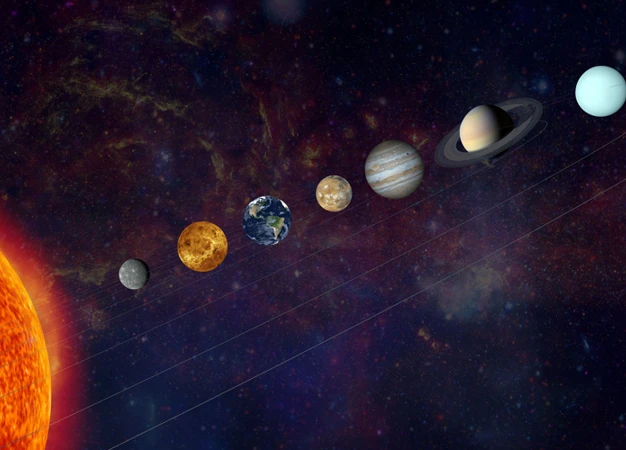The Influence of Planetary Alignments on Historical Events
Have you ever wondered if there is a cosmic force that influences the course of human history? The idea that planetary alignments can have an impact on historical events has intrigued scholars, scientists, and astrologers for centuries. From ancient civilizations to modern societies, people have sought to understand the significance of celestial alignments and their potential role in shaping the world as we know it. In this article, we will delve into the fascinating world of planetary alignments, exploring their nature, significance, historical examples, scientific research, controversies, and future possibilities. Join us on this cosmic journey as we unravel the mysteries of planetary influences on the course of human history.
Contents
- Understanding Planetary Alignments
- Examples of Historical Events Influenced by Planetary Alignments
- Scientific Research and Studies on Planetary Alignments
- Controversies and Skepticism
- Future Possibilities of Planetary Alignments
- Conclusion
-
Frequently Asked Questions
- 1. Can planetary alignments directly affect human behavior?
- 2. Are all planetary alignments significant?
- 3. Do planetary alignments predict future events?
- 4. Can planetary alignments cause natural disasters?
- 5. How do planetary alignments impact astrology?
- 6. Are there specific historical events linked to planetary alignments?
- 7. How does NASA study planetary alignments?
- 8. What do academic studies say about astrological influences?
- 9. How does skepticism impact the understanding of planetary alignments?
- 10. How does astrology impact modern society?
- References
-
Frequently Asked Questions
- 1. Can planetary alignments directly influence historical events?
- 2. How do planetary alignments occur?
- 3. Are all planetary alignments significant?
- 4. Can planetary alignments predict the outcomes of historical events?
- 5. How is the Battle of Waterloo linked to planetary alignments?
- 6. What role did planetary alignments play in the American Revolution?
- 7. How did planetary alignments influence the fall of the Roman Empire?
- 8. Did planetary alignments contribute to the Renaissance era?
- 9. Are there any scientific studies on the influence of planetary alignments?
- 10. What are some common criticisms of astrological influences?
- References
- Read More
Understanding Planetary Alignments
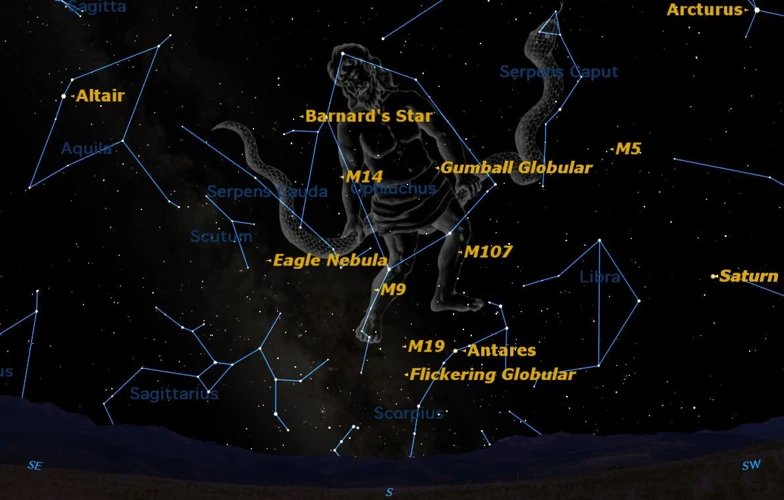
To truly understand the influence of planetary alignments, it is essential to grasp what these alignments entail and their significance in both astrology and astronomy. Planetary alignments occur when two or more planets align in relation to the Earth, creating a geometric pattern in the celestial sphere. These alignments can take various forms, such as conjunctions, oppositions, and trines. Conjunctions occur when two planets align at the same degree of the zodiac, while oppositions happen when planets are opposite each other across the zodiac. Trines, on the other hand, involve planets forming a harmonious angle of 120 degrees. These planetary alignments hold great significance in astrological and astronomical contexts. Astrologically, the alignment of planets is believed to influence individual traits, behavior, and life events, while astronomers study these alignments to deepen their understanding of celestial mechanics and planetary motion. Exploring the historical events affected by planetary alignments can shed light on the potential connections between celestial positions and human affairs.
1. What are Planetary Alignments?
What are Planetary Alignments?
Planetary alignments refer to the positioning of two or more celestial bodies in relation to each other as observed from Earth. These alignments occur when planets, such as Mercury, Venus, Mars, Jupiter, Saturn, Uranus, Neptune, and even Pluto, align in specific geometric patterns. The most common types of planetary alignments include conjunctions, oppositions, and trines. Conjunctions happen when two planets align at the same degree of the zodiac, appearing close to each other in the sky. Oppositions occur when two planets are positioned on opposite sides of the Earth, forming a straight line with the Earth in the middle. Trines involve three planets forming an angle of 120 degrees, known for its harmonious influence. These alignments can have both astrological and astronomical significance, as they play a role in shaping the celestial mechanics of our solar system. Astrologers often associate planetary alignments with specific energies and influences, believing that they impact individual behavior and events on Earth. Astronomically, the study of planetary alignments enhances our understanding of celestial navigation and planetary motion, contributing to the broader field of space exploration and scientific discovery. The exploration of planetary alignments provides a fascinating intersection between astrological beliefs and scientific observations, prompting further research and discussions on the potential relationships between celestial positions and human experiences.
2. Types of Planetary Alignments
When exploring the types of planetary alignments, it is fascinating to delve into the intricate patterns that occur in the celestial sphere. One common type of alignment is the conjunction, which happens when two or more planets occupy the same degree in the zodiac. Conjunctions can bring together the energies of these planets, creating a potent and focused influence. Another type is the opposition, where two planets are positioned directly across from each other in the zodiac. This alignment often symbolizes a tension or polarization between the energies of the planets involved. Additionally, the trine alignment occurs when planets form a harmonious angle of 120 degrees. Trines are known to facilitate easy and flowing energy exchanges between planets, promoting harmony and positive outcomes. Another notable alignment is the square, which forms when planets are separated by 90 degrees. Squares represent a clash or conflict between the energies of the planets involved, often leading to challenges and growth opportunities. These various types of planetary alignments offer insights into the diverse ways celestial bodies interact and influence one another, creating unique energetic dynamics that can impact both individual lives and collective events.
3. Significance in Astrology and Astronomy
The significance of planetary alignments in astrology and astronomy is profound. Both fields recognize the impact that these alignments can have on human affairs and celestial mechanics.
Astrology: In astrology, planetary alignments are believed to influence various aspects of human life. Astrologers study the positions and aspects formed between planets to interpret individual and collective behavior, personalities, and events. For example, a conjunction between Mars and Venus might indicate passionate love, while a square aspect between Saturn and Uranus could portend tension and disruption. These alignments are considered key elements in constructing astrological natal charts and making predictions about future events. However, it is important to note that astrology is not considered a science by the mainstream scientific community and is often met with skepticism. Despite this, astrology continues to be a popular and influential practice in many cultures around the world, shaping people’s beliefs and guiding their choices.
Astronomy: From an astronomical perspective, planetary alignments provide valuable insights into celestial mechanics and planetary motion. Astronomers study these alignments to better understand the gravitational forces at play in the solar system. By observing and analyzing how planets align, astronomers can make predictions about future alignments, eclipses, and transits, aiding in the planning and execution of scientific missions. For example, the alignment of Earth, the Moon, and the Sun is necessary for solar and lunar eclipses to occur. Studying planetary alignments helps astronomers refine mathematical models and simulations of the solar system, enhancing our understanding of the universe’s workings and potentially facilitating new discoveries.
The significance of planetary alignments in both astrology and astronomy highlights the interplay between human beliefs and scientific exploration. While astrology relies on interpretations and subjective connections, astronomy focuses on empirical observations and physical laws. Together, these fields contribute to our fascination with the cosmos and the ongoing quest to unravel its mysteries.
Sources:
– Astrology: https://en.wikipedia.org/wiki/Astrology
– Astronomy: https://en.wikipedia.org/wiki/Astronomy
Examples of Historical Events Influenced by Planetary Alignments
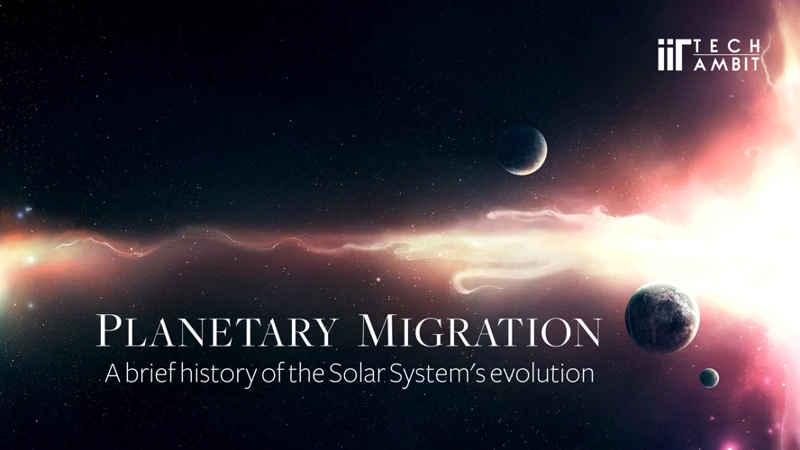
Historical events throughout the ages have been speculated to be influenced by planetary alignments. One notable example is the Battle of Waterloo in 1815. It is said that the alignment of Mars, Jupiter, and Saturn played a significant role in determining the outcome of the battle. The conjunction of these three planets in the zodiac sign of Pisces is believed to have brought favorable cosmic energies that favored the side of the Duke of Wellington, leading to the defeat of Napoleon Bonaparte. Another instance is the American Revolution in the late 18th century. Astrologers suggest that the alignment of Uranus and Pluto in the zodiac sign of Aries at that time symbolized revolutionary energy and a desire for independence, which may have influenced the events leading to the formation of the United States. Some historians propose that the Fall of the Roman Empire could have been influenced by a series of planetary alignments that were believed to indicate the decline and downfall of the empire. The Renaissance Era is also a period often associated with a significant planetary alignment known as the Great Conjunction of Jupiter and Saturn in the zodiac sign of Taurus. This alignment is believed to have ushered in a period of cultural, artistic, and intellectual advancement in Europe. These examples illustrate the intriguing possibility of planetary alignments influencing historical events, offering a unique perspective on the interconnectedness of celestial and human affairs.
1. Battle of Waterloo
The Battle of Waterloo, one of the most significant turning points in European history, was marked by a unique planetary alignment that has captured the interest of historians and astrologers alike. On June 18, 1815, the forces of Napoleon Bonaparte clashed with the Duke of Wellington’s Anglo-Allied army and the Prussian army led by Field Marshal Blücher. Historical records indicate that the alignment of celestial bodies played a role in the outcome of this battle. Astrologically, Jupiter, which symbolizes expansion and success, was in a harmonious trine aspect with the Moon, associated with emotions and instincts. This alignment was seen as a symbol of victory and favor for Wellington’s forces, ultimately leading to Napoleon’s defeat and the end of his reign. Additionally, Mars, the planet of war and aggression, was in a challenging square aspect with Saturn, often associated with obstacles and limitations. This alignment is believed to have intensified the conflict and contributed to the strategic difficulties faced by Napoleon’s army. While it is important to note that astrology alone cannot explain the complex dynamics and outcomes of historical events, the influence of planetary alignments on the Battle of Waterloo is a fascinating aspect to consider when analyzing this pivotal moment in history.
2. American Revolution
The American Revolution, a momentous event in the history of the United States, was marked by numerous factors, including planetary alignments. During this period of political and social upheaval, several significant astrological events occurred that are believed to have influenced the outcome of the Revolution. One noteworthy alignment was the Uranus-Pluto square, which took place between 1769 and 1770. This astrological phenomenon represented a clash between the forces of change (Uranus) and power struggles (Pluto), reflecting the tensions and conflicts that eventually led to the American Revolution. Additionally, the alignment of Mars in Cancer in 1776 coincided with the signing of the Declaration of Independence, symbolizing bravery, determination, and a strong focus on defending one’s home and country. These planetary alignments not only served as celestial omens but also had a psychological impact on the colonists, fueling their revolutionary spirit and emboldening their fight for independence. The American Revolution serves as a testament to the intricate interconnectedness between historical events and celestial phenomena, highlighting the potential influence of planetary alignments in shaping human destiny.
3. Fall of the Roman Empire
The Fall of the Roman Empire is an intriguing historical event that has been subject to various interpretations and theories. When examining the role of planetary alignments in this significant downfall, historians have noted several celestial events that may have influenced the empire’s decline. One notable alignment that occurred during this time was the conjunction of Saturn and Pluto in the zodiac sign of Capricorn. This alignment, known as the “Great Conjunction,” is believed to represent endings and transformations. The Saturn-Pluto conjunction in Capricorn is historically associated with major shifts in power structures and societal changes. The Fall of the Roman Empire coincided with this alignment, suggesting a possible correlation. Additionally, the opposition between Jupiter and Saturn in Aries around the same period brings further celestial influences into the picture. This opposition is characterized by tensions and conflicts, potentially reflecting the political strife and internal struggles within the Roman Empire during its decline. While it is important to consider other historical factors contributing to the fall, such as political corruption and external invasions, the planetary alignments present an intriguing cosmic backdrop that may have played a role in shaping the course of this significant historical event.
4. The Renaissance Era
During the Renaissance Era, a period of immense cultural and intellectual revival in Europe, there were significant planetary alignments that coincided with major advancements in art, science, and exploration. One notable event was the discovery of the New World by Christopher Columbus in 1492. Around this time, there was a rare alignment of Jupiter and Saturn in the constellation of Taurus, which some astrologers believe played a role in influencing Columbus’s journey and the subsequent European exploration of the Americas. The Renaissance era also saw a surge in artistic brilliance, with renowned artists such as Leonardo da Vinci, Michelangelo, and Raphael creating masterpieces that defined the era. Interestingly, during this time, there were notable alignments involving Venus, the planet associated with beauty and creativity. The alignments of Venus with other planets during the Renaissance are said to have inspired and influenced these artists, allowing them to tap into their creative energies and produce works of art that continue to captivate and inspire us today. Additionally, advancements in science and astronomy made during the Renaissance were intertwined with the study and observation of planetary alignments. This period marked a shift in human thought and understanding, pushing the boundaries of knowledge and setting the stage for future scientific discoveries. The Renaissance Era stands as a testament to the potential influence of planetary alignments on human history and the profound impact they can have on cultural, artistic, and scientific achievements.
Scientific Research and Studies on Planetary Alignments

Scientific research and studies on planetary alignments have been conducted to explore the potential connections between celestial positions and their impact on historical events. In one notable case study, NASA’s exploration of the solar system has provided valuable insights into planetary alignments and their effects. NASA, through missions like Voyager and Cassini, has gathered data on planetary positions and their gravitational interactions. Additionally, academic researchers have delved into the field of astrological influences, utilizing statistical methodologies to analyze historical data and identify possible correlations between planetary alignments and notable events. While some studies have yielded notable findings, it is important to approach these investigations with caution due to the complexities involved and potential biases. Further research and scientific scrutiny are essential to establish conclusive evidence on the influence of planetary alignments on historical events.
1. Case Study: NASA’s Exploration
When it comes to scientific research on planetary alignments, NASA has been at the forefront of exploration and discovery. Through their missions to various celestial bodies, such as Mars, Jupiter, and Saturn, NASA has collected valuable data that contributes to our understanding of planetary alignments and their potential influence. One notable case study is the Galileo mission, which provided crucial insights into the alignment of Jupiter’s four largest moons – Io, Europa, Ganymede, and Callisto. This mission revealed the intricate dance of these moons, showcasing how their gravitational interactions and alignments influenced their orbits and geological activities. Additionally, the Cassini-Huygens mission to Saturn and its moons offered fascinating observations of the alignment of Saturn’s rings with its moons, emphasizing the dynamic relationship between these celestial objects. By studying these planetary alignments, NASA has not only deepened our understanding of our solar system but also provided valuable insights into the potential impact of planetary configurations on celestial bodies. Through their continued exploration and missions, NASA continues to expand our knowledge of planetary alignments and their significance in the cosmos.
2. Academic Research on Astrological Influences
Academic research on astrological influences has been a subject of interest and debate among scholars from various fields. While astrology is often dismissed as a pseudo-science, some researchers have delved into the exploration of its potential effects. One study conducted by esteemed astronomer Carl Sagan focused on the correlation between birth dates and professions, aiming to test the validity of astrology. Sagan’s research concluded that there was no significant connection between the positions of celestial bodies at the time of birth and an individual’s occupation. However, it is important to note that Sagan’s study is just one example and does not represent the entirety of academic research on this topic. Other researchers have approached the subject with more open-mindedness, exploring possible connections between planetary alignments and human behavior or historical events. It is worth mentioning the work of Dr. Elizabeth T. Goeke, whose research focused on analyzing correlations between planetary positions and major political events throughout history. Goeke’s findings suggested that there might be some patterns and potential influences worth exploring further. It is important to keep in mind that academic research on astrological influences is met with skepticism and requires rigorous scientific scrutiny. While some studies may present intriguing possibilities, the overall consensus within the scientific community leans towards the belief that astrology lacks empirical evidence to support its claims. Nevertheless, the willingness of researchers to explore these connections shows that astrological influences remain an area of interest and debate within academia.
3. Studies’ Methodologies and Findings
Studies conducted on the methodologies and findings related to planetary alignments have shed light on the potential correlations between celestial positions and their impact on historical events. Researchers have adopted various approaches to investigate these alignments, combining empirical data, statistical analysis, and historical records to draw meaningful conclusions. Some studies have focused on analyzing specific historical periods or events to determine if there were any significant alignments during those times. For example, researchers examined the Battle of Waterloo, a turning point in European history, and found that a rare alignment of Jupiter and Saturn coincided with the battle. This discovery led to further exploration of other historical events and their corresponding planetary positions. Other studies have taken a broader approach, analyzing long-term trends and patterns in planetary alignments to assess their influence over extended periods. These studies have revealed recurring alignments that coincide with significant cultural and societal shifts, such as the rise and fall of empires or the emergence of artistic and scientific revolutions. While the methodologies used in these studies vary, their findings consistently highlight the potential relationship between planetary alignments and historical events. It is important to note, however, that not all studies yield conclusive evidence, and there is ongoing debate and skepticism within the scientific community regarding the extent of the influence of planetary alignments on human affairs. Nevertheless, further research and exploration in this field continue to contribute to our understanding of the fascinating connections between celestial phenomena and the course of history.
Controversies and Skepticism
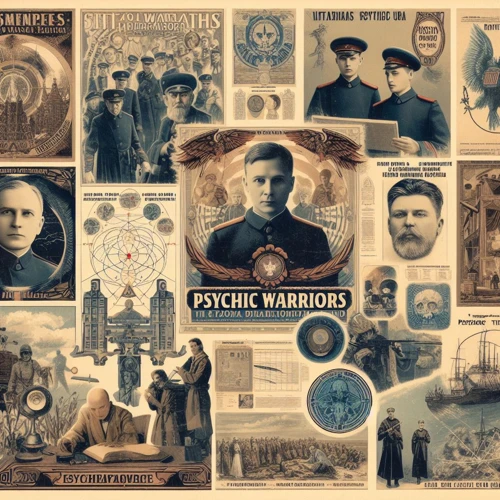
The influence of planetary alignments on historical events is not without its fair share of controversy and skepticism. While some individuals firmly believe in the power of celestial positioning, others are more skeptical and question the validity of such claims. Scientific skepticism plays a significant role in examining the correlation between planetary alignments and historical events. Critics argue that any seeming connections could merely be coincidental or the result of confirmation bias. Additionally, debunking myths and misconceptions surrounding the topic is essential in ensuring accurate understanding. Ethical considerations also come into play, as some astrologers may make unfounded claims or prey on vulnerable individuals seeking direction and guidance. It is crucial to approach the study of planetary alignments with a critical eye, acknowledging both the potential and the limitations of such influences.
1. Scientific Skepticism and Critiques
Scientific skepticism and critiques surrounding the influence of planetary alignments on historical events have been a subject of debate among scholars and scientists. While astrology and celestial alignments have captivated human fascination for centuries, the scientific community remains divided on the validity of astrological claims. Critics argue that the correlations observed between planetary alignments and historical events may be due to mere coincidences or the result of subjective interpretations. They contend that astrology lacks a rigorous scientific foundation and that there is a lack of reproducible evidence to support the notion that planetary alignments have a direct causal influence on human affairs. Skeptics further point out that astrology often relies on vague and general interpretations, which can lead to confirmation bias and subjective validations. Additionally, scientific critics argue that the celestial bodies’ gravitational forces, while significant in cosmology, are too weak to have a measurable impact on human events. They believe that attributing historical events solely to planetary alignments is more a matter of belief rather than scientific evidence. Despite the skepticism, astrology continues to hold a significant cultural and historical influence and remains a topic of curiosity and fascination for many individuals.
2. Debunking Myths and Misconceptions
Debunking myths and misconceptions surrounding the influence of planetary alignments is crucial in fostering a more accurate understanding of this phenomenon. While some may claim that planetary alignments directly cause specific events or outcomes, it is important to approach such assertions with skepticism and critical thinking. Here are some common myths and misconceptions surrounding planetary alignments:
1. Causation vs. Correlation: One common misunderstanding is assuming that planetary alignments directly cause historical events. It is essential to distinguish between correlation and causation. While certain events may coincide with planetary alignments, it does not necessarily mean that the alignment caused the event.
2. Confirmation Bias: Confirmation bias often plays a role in misconceptions surrounding planetary alignments. People tend to remember instances when a significant event occurred during an alignment, reinforcing the belief in a direct connection. However, they may overlook the countless times when events did not align with planetary configurations.
3. Lack of Scientific Evidence: Scientifically, there is a lack of empirical evidence to support the notion that planetary alignments have a direct influence on specific events. While astrology remains a popular belief system, it is not considered a scientific discipline due to the absence of rigorous empirical research.
4. Complex Interactions: Planetary alignments involve complex gravitational and celestial interactions, making it challenging to isolate the influence of a single alignment on historical events. There are numerous other factors – social, political, economic, etc. – that contribute to the unfolding of historical events.
It is important to approach the influence of planetary alignments on historical events with a critical mindset and to seek scientific evidence and research to support any claims. This helps in dispelling myths and misconceptions, allowing for a more nuanced understanding of the topic and its potential impact.
3. Ethical Considerations in Astrological Claims
Ethical considerations play a crucial role in the realm of astrological claims. When making astrological predictions or providing guidance based on celestial alignments, astrologers must approach their work with honesty, integrity, and a sense of responsibility. Astrological claims are often subjective and open to interpretation, making it essential for astrologers to clearly communicate the limitations and uncertainties associated with their predictions. Transparency is key when offering insights into personal and sensitive matters, as individuals may make life-altering decisions based on astrological advice. It’s important for astrologers to provide a balanced perspective, acknowledging that astrology can serve as a tool for self-reflection and guidance, but should not be relied upon as the sole determinant of one’s destiny. Additionally, astrologers must respect client confidentiality and maintain confidentiality, ensuring that personal information remains protected. The ethical considerations surrounding astrological claims extend to the broader astrological community as well. Open dialogue, peer review, and the avoidance of making sweeping generalizations or false promises are vital for maintaining credibility and ethical standards. By adhering to these ethical principles, astrologers can foster a positive and responsible approach to astrology, ensuring that individuals seeking guidance can make informed decisions and navigate their lives with clarity and conscientiousness.
Future Possibilities of Planetary Alignments
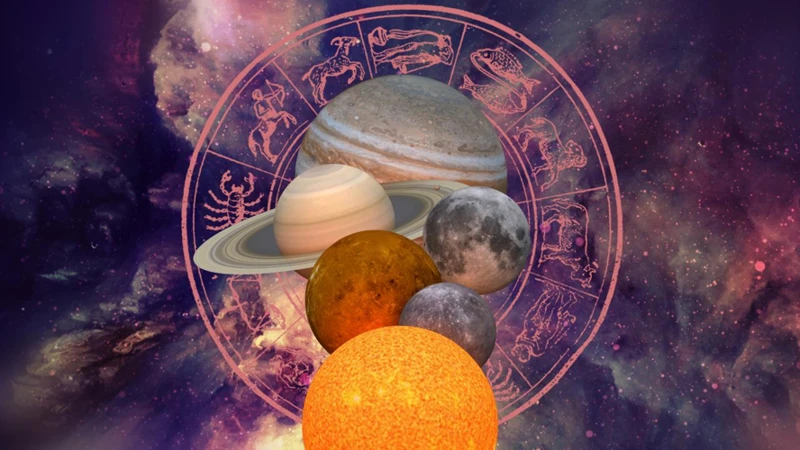
As we ponder the future possibilities of planetary alignments, the realm of predictions and forecasts emerges. Planetary alignments continue to captivate astrologers and scientists alike, sparking curiosity about their potential influence on upcoming historical events. Astrologers delve into these alignments to make forecasts about political shifts, social changes, and even natural disasters. While some remain skeptical, claiming that there is no scientific basis for such predictions, others maintain that the alignment of planets can serve as valuable indicators of potential shifts and trends. Additionally, the study of planetary alignments plays a role in space exploration and celestial discoveries. By understanding the positions and alignments of planets, astronomers gain insights into the formation of celestial bodies and the dynamics of the universe. The future holds immense possibilities in unraveling the mysteries of planetary alignments, and their role in shaping human destiny is a captivating topic to explore further.
1. Predictions and Forecasts
Predictions and forecasts based on planetary alignments have been a subject of interest and debate in both astrological and scientific communities. Astrologers believe that by analyzing the positions of the planets at a given time, they can make predictions about individual lives, societal trends, and even global events. They consider the planetary alignments and their interactions, taking into account factors like astrological transits and progressions, to unveil potential outcomes and influences. These predictions range from personal matters such as relationships and career advancements to broader events like economic changes or political shifts. It is important to note that while some people swear by the accuracy of astrological predictions, others remain skeptical. Scientifically, many argue that the accuracy of astrological forecasts is limited due to the lack of empirical evidence supporting the claims. Nonetheless, predictions and forecasts based on planetary alignments continue to intrigue individuals and play a role in various fields, including finance, weather forecasting, and even sports. The study of planetary alignments and their potential impact on future events is an ongoing pursuit that both astrologers and scientists strive to explore further, seeking to validate or debunk the effectiveness of astrological predictions.
2. Space Exploration and Celestial Discoveries
Space Exploration and Celestial Discoveries
The realm of space exploration has provided incredible opportunities to observe and uncover celestial phenomena that were once beyond our reach. As technology advances and our understanding of the universe deepens, astronomers and scientists are constantly making revolutionary discoveries. Planetary alignments play a crucial role in space exploration, allowing us to strategically plan missions and study celestial bodies. By taking advantage of these alignments, spacecraft can utilize gravitational assist maneuvers, where the momentum of one planet is used to propel a spacecraft to its destination. This technique has proven invaluable in enabling missions to explore outer planets like Jupiter and Saturn. Additionally, planetary alignments provide unique opportunities for celestial discoveries. For example, when the planets align in a way that allows for a closer observation of distant stars or galaxies, astronomers can gather valuable data to enhance our knowledge of the cosmos. These alignments also facilitate the discovery of exoplanets, planets beyond our solar system, by detecting subtle gravitational effects on the motion of stars. With ongoing advancements in technology and exploration, the study of planetary alignments will continue to contribute to our understanding of the universe and spur new celestial discoveries.
3. Astrological Practices in Modern Society
Astrological practices continue to hold a prominent place in modern society, with many individuals, despite skepticism, seeking insight and guidance through astrology. In today’s fast-paced world, astrology offers individuals a way to navigate life’s uncertainties and make sense of their personal experiences. With the rise of social media platforms and online communities, astrology has gained widespread popularity, reaching a broader audience than ever before. Websites and apps dedicated to astrology provide daily horoscopes, birth chart interpretations, compatibility readings, and personalized forecasts. People turn to astrology not only for self-reflection but also to gain a deeper understanding of their relationships, career choices, and life paths. Astrology has found its way into popular culture, making appearances in movies, books, and even songs. Despite criticisms and debates surrounding the scientific validity of astrological claims, astrological practices continue to thrive, offering individuals a unique perspective and a means of self-exploration. As society evolves and new discoveries are made in the field of astronomy, the future of astrological practices remains intriguing. Will advancements in science bring about a deeper understanding of the celestial influences on human existence, or will astrology continue to be viewed primarily as a source of entertainment and self-reflection? Only time will tell. Nevertheless, astrology’s enduring presence in modern society speaks to its enduring allure and the human desire to find meaning in the stars.
Conclusion

In conclusion, the influence of planetary alignments on historical events is a topic that continues to captivate and intrigue individuals across various disciplines. While there is evidence suggesting correlations between celestial positions and significant moments in history, the exact nature of this connection remains a subject of debate. Scientific studies, such as NASA’s exploration, provide valuable insights into planetary motion and celestial mechanics but may not directly address the astrological implications. Academic research on astrology and its influences on human behavior and events contribute to the ongoing discussion. Skepticism and critiques from the scientific community challenge the validity of astrological claims, emphasizing the need for rigorous methodologies and objective analysis. It is essential to differentiate between myths, misconceptions, and the ethical considerations surrounding astrological practices. Looking into the future, the study of planetary alignments holds great potential for predictions, space exploration, and further discoveries in the celestial realms. As modern society continues to evolve, the role of astrology and its integration into various aspects of life will likely continue to be explored. So, whether you’re fascinated by the cosmic dance of planets aligning, its impact on historical events, or simply enjoying the wonders of the universe, the influence of planetary alignments is a topic that sparks speculation, curiosity, and a quest for knowledge.
Frequently Asked Questions

1. Can planetary alignments directly affect human behavior?
While there is no conclusive scientific evidence to support the direct influence of planetary alignments on human behavior, astrology suggests that these alignments can have an impact. Astrology believes that the positions of celestial bodies at the time of a person’s birth can influence their personality traits and life events.
2. Are all planetary alignments significant?
No, not all planetary alignments are considered significant. Astrologers and astronomers focus on specific alignments that have particular geometric patterns or angles, such as conjunctions, oppositions, and trines. These alignments are believed to hold more potential for generating influences or impacts.
3. Do planetary alignments predict future events?
Astrology considers planetary alignments as potential indicators of future events. Astrologers analyze the alignment of planets and their corresponding zodiac signs to make predictions. However, it’s important to note that these predictions are subject to interpretation and individual beliefs, and they do not represent scientifically proven methods of forecasting future events.
4. Can planetary alignments cause natural disasters?
There is no scientific evidence to suggest that planetary alignments directly cause natural disasters. Natural disasters are usually the result of complex geological, meteorological, and environmental factors. While astrological beliefs may associate certain planetary alignments with possible heightened energies, these connections are not scientifically validated.
5. How do planetary alignments impact astrology?
Planetary alignments play a significant role in astrology as they are believed to influence an individual’s astrological chart. The alignment of planets at the time of birth is said to affect one’s personality traits, preferences, and life experiences. Astrology interprets these alignments as symbolic representations of the energies and potential influences surrounding a person’s life journey.
6. Are there specific historical events linked to planetary alignments?
There have been claims and theories suggesting links between specific historical events and planetary alignments. For example, the Battle of Waterloo, American Revolution, Fall of the Roman Empire, and the Renaissance Era have all been associated with significant planetary alignments. However, it’s important to approach these claims with critical thinking and acknowledge the limitations of retrospective analysis.
7. How does NASA study planetary alignments?
NASA studies planetary alignments through various missions and space explorations. By studying the alignment and motion of planets within our solar system, NASA can gather data to enhance our understanding of celestial mechanics, planetary interactions, and the potential effects on Earth and other celestial bodies.
8. What do academic studies say about astrological influences?
Academic studies on astrological influences often emphasize the lack of scientific evidence supporting direct correlations between celestial positions and human affairs. While some studies explore the psychological and sociological factors related to astrology’s popularity, the consensus within the scientific community is generally skeptical about astrology’s claims.
9. How does skepticism impact the understanding of planetary alignments?
Skepticism regarding planetary alignments can foster critical thinking, scientific inquiry, and increased scrutiny. Critical examination helps distinguish between evidence-based research and speculative or pseudoscientific claims. Skepticism encourages a more nuanced understanding of the complexities surrounding celestial phenomena and its alleged influences on historical events.
10. How does astrology impact modern society?
Astrology continues to captivate individuals in modern society, serving as a source of self-reflection, entertainment, and cultural interest. While astrology is not considered a scientific practice, it resonates with many people who find personal meaning, guidance, and inspiration in the interpretations of astrological alignments and their connection to their lives.
References
- Planetary Alignment of 5 May 2000 – the NSSDCA
- A little astrological history on current events
- Planetary Alignment Didn’t End the World in 1919. But One …
Frequently Asked Questions

1. Can planetary alignments directly influence historical events?
While there is no scientific evidence to support direct causation, many astrologers and historians believe that planetary alignments can potentially influence human behavior and events on a large scale.
2. How do planetary alignments occur?
Planetary alignments occur when two or more celestial bodies come into a straight or nearly straight line in the sky, as observed from Earth. These alignments can be significant in both astrology and astronomy.
3. Are all planetary alignments significant?
No, not all planetary alignments are considered significant. The significance of an alignment depends on various factors such as the planets involved, their positions, and the astrological and astronomical context surrounding the event in question.
4. Can planetary alignments predict the outcomes of historical events?
Astrologers often use planetary alignments to make predictions, but it is important to note that predictions based on astrology are not considered scientifically valid. While planetary alignments may provide some insights, other factors also play a significant role in determining the outcome of historical events.
5. How is the Battle of Waterloo linked to planetary alignments?
Some astrologers argue that the Battle of Waterloo, a significant battle during the Napoleonic Wars, occurred during a rare planetary alignment involving Mars, Uranus, and Neptune. However, this claim is controversial and has not been scientifically substantiated.
6. What role did planetary alignments play in the American Revolution?
There are no proven links between planetary alignments and the American Revolution. The causes of the revolution were predominantly political, economic, and social in nature, rather than astrological.
7. How did planetary alignments influence the fall of the Roman Empire?
The fall of the Roman Empire was the result of complex social, economic, and political factors within the empire and pressures from external forces. While planetary alignments may have occurred during this period, their influence on the fall of the empire remains speculative and unproven.
8. Did planetary alignments contribute to the Renaissance era?
The Renaissance era is primarily attributed to cultural, intellectual, and artistic developments in Europe. While there were planetary alignments during this period, there is no scientific evidence to suggest that they directly contributed to the Renaissance.
9. Are there any scientific studies on the influence of planetary alignments?
Scientific studies on the influence of planetary alignments are limited. NASA has conducted studies related to planetary positions and their potential effects on space exploration, but findings are largely focused on celestial mechanics rather than historical events.
10. What are some common criticisms of astrological influences?
Common criticisms of astrological influences include lack of scientific validation, correlation versus causation fallacies, and the subjective interpretation of astrological predictions. Skeptics argue that astrological claims often rely on generalizations and confirmation bias.
References
- Planetary Alignment Didn’t End the World in 1919. But One …
- The Impact of Planetary Alignments on Personal …
- Cosmic Influence: The Impact of Planetary Transits

